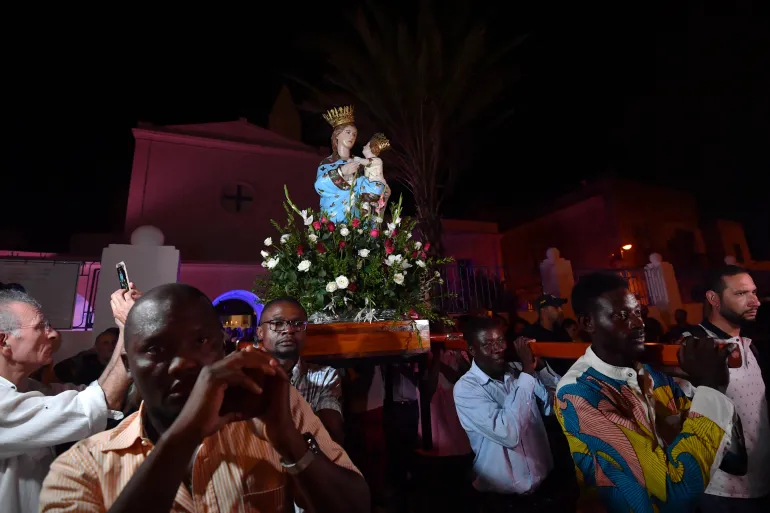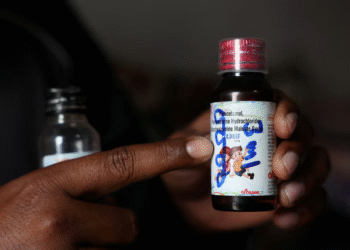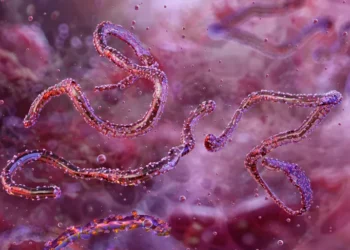TUNIS (Realist English). Night had just begun to settle over Halq al-Wadi — La Goulette, the coastal suburb of the Tunisian capital — when the statue of the Virgin Mary emerged from the Church of Saint Augustine and Saint Fidele into a packed square. Carried on the shoulders of a dozen parishioners, the figure was met with cheers, ululations and a Tunisian flag waving above the crowd.
Hundreds of people — Tunisians, Europeans and sub-Saharan Africans — joined the annual procession of Our Lady of Trapani, one of the country’s most distinct public Catholic celebrations. Many attendees, including those who filled the earlier Mass, were migrants from sub-Saharan Africa.
“It’s the Holy Virgin who brought us here today,” said Isaac Lusafu from the Democratic Republic of the Congo. “Today she has united us all.”
The procession — which moved in a slow circle through the square as hymns were sung — unfolded under a mural of Italian actress Claudia Cardinale, born in La Goulette. Her image is a reminder of a bygone era when the district was home to thousands of Sicilian migrants, who brought the feast to Tunisia in the late 19th century.
At its height in the early 20th century, the celebration drew Catholics, Muslims and Jews, who accompanied the Virgin to the sea to bless fishermen’s boats. The tradition vanished after independence, when most Europeans left and public Christian ceremonies were suspended. From 1964 to 2017, the statue remained inside the church.
Permission to revive the procession was granted seven years ago. Today, many young Tunisians — including Muslims who venerate Mary in Islam — join the event, often driven by cultural interest or nostalgia for La Goulette’s multiethnic past, popularised in Tunisian cinema.
As Tunisia’s European population dwindled, new migrant communities from sub-Saharan Africa reshaped the church’s congregations. Many of them, facing discrimination in daily life, now form the majority of Tunisia’s practicing Catholics. A mural inside the church shows the Virgin extending her mantle over Tunisians, Sicilians and Africans — surrounded by floating passports symbolising perilous sea journeys.
“This celebration once marked the bond between the two shores of the Mediterranean,” Archbishop Nicolas Lhernould told Al Jazeera. “Today it brings together an even more diverse group — locals, migrants, tourists. Mary herself was a migrant.”
While most of La Goulette’s “Little Sicily” has disappeared, descendants of the original community say traces endure — in memory, film, and even in small gestures such as Tunisians visiting the graves of their Sicilian relatives on All Saints’ Day.
“For me, it’s a reminder that Little Sicily is still with us,” said Rita Strazzera, born in Tunis to Sicilian parents.


















